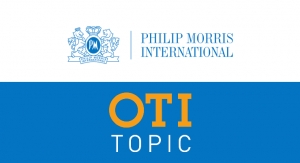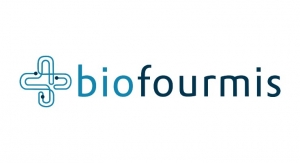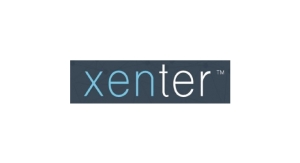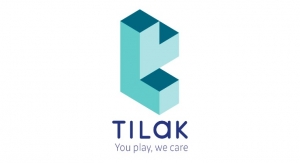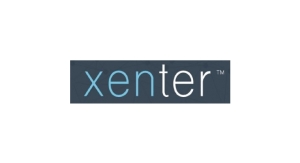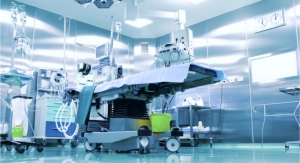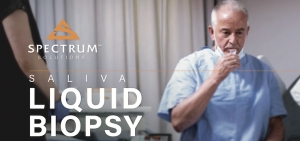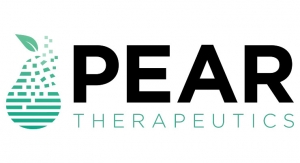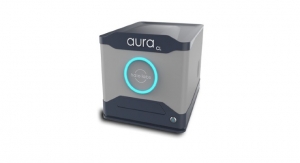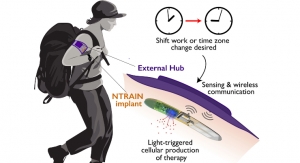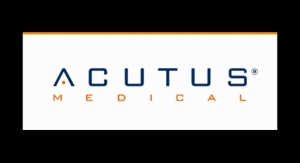Bryan Hughes, Director, P&M Corporate Finance07.26.17
Necessity is the mother of invention. Although often attributed to Plato and appearing in certain translations of his Republic, this well-known proverb more likely evolved from an early 1500s Latin textbook of everyday sayings that included the phrase “mater artium necessitas”—need is the mother of arts.
Henry Ford faced this issue in the early 1900s. In 1907, he boldly promised to “build a car for the great multitude…so low in price that no man making a good salary will be unable to own one.” Unfortunately, automotive production methods back then jacked up the sticker price. Ford knew he would need to change the way cars were manufactured, and by December 1913, the Ford Motor Company had introduced the assembly line in its Highland Park plant.
In healthcare, and specifically medical technology today, the same proverb holds true. As U.S. Senate Republicans worked through the July 4 holiday to rally enough votes to save their version of an Obamacare repeal, the Congressional Budget Office projected that 22 million Americans could become uninsured under the bill. Understandably, their Democratic counterparts and most media outlets seized on this report as the final nail to any immediate changes to the Affordable Care Act. What has been lost in the partisan debate, though, is the fact that just two years ago, the Medicare Access and CHIP Reauthorization Act (MACRA) passed in a decidedly bipartisan fashion.
Among a number of other important provisions, MACRA requires the Centers for Medicare and Medicaid Services to begin implementing the Quality Payment Program, the agency’s most significant push toward value-based healthcare, and away from traditional fee-for-service models. While the Affordable Care Act included a number of similar components, MACRA has accelerated the value-based approach to healthcare.
At their core, value-based and other shared-risk payment models are driven by the need to reduce healthcare costs. In 2014, the U.S. spent 17.5 percent of gross domestic product (roughly $3 trillion) on healthcare, but ranked 37th in the World Health Organization’s performance assessment of national health systems. The U.S. system is extremely complex, consisting of multiple stakeholders often having competing economic and care priorities. As such, the shift toward a fully value-based system is expected to take many years. To make this transition work, providers, physicians, payers, and even patients must rethink delivery—likely evolving toward more preventative and individualized continuum of care approaches. In fact, some bundled payment models have already shifted economic responsibility to providers for surgical patients for the period of time both before and after surgery.
To tie this all together, there is a tremendous need for smarter, more connected devices, data analytics, and predictive algorithms. The engagement tools between physician and patient have become more individualized and “consumerized,” while at the same time, the data needs of population-based risk management infrastructure rival those of more digitally advanced industries. In short, the necessity of driving down healthcare costs has created an entirely new segment of the medical device industry for digital therapeutics, and the largest, most established players are keenly, albeit cautiously, taking notice.
While Henry Ford was developing a strategy to deliver his promised car to the great multitude, the speedometer was gradually becoming standard equipment on most vehicles. A half century later, Chrysler Corporation introduced auto pilot as the first broadly available cruise control on the 1958 Imperial. A Popular Science article that year questioned concerns whether robots [were] slowly taking over a driver’s “chores.” While those concerns seem overblown in hindsight, the conversion of analog tools (speedometer and cruise control) to integrated digital systems earlier this decade has, in fact, ushered in such advances as adaptive cruise control and autonomous vehicles.
For the medical device industry, the same digital revolution has enabled a new segment of connected, integrated therapeutics. These systems bring together the most advanced sensors and diagnostic technologies, along with new paradigms for preventative medicine, and coupled those with lessons from consumer electronics and other industries.
While there are hundreds of digital therapeutic and connected device participants, the following examples highlight the investment approach more established medical device players are taking in the space as they cautiously watch the industry develop.
RespondWell—Zimmer Biomet acquired the tele-rehabilitation firm in 2016 to enhance its Signature Solutions offering. While technically labeled as asynchronous telerehabilitation, RespondWell has developed a platform and software to provide physical therapy at home by leveraging technology from the video game industry. Digital instructors—think video game characters—lead patients through physical therapy sessions at their convenience. In turn, the platform relays video and other data to therapists who monitor progress virtually. Prior to being acquired, RespondWell had completed a small clinical study that showed there was no statistical difference between groups of patients that received physical therapy in an outpatient setting and those that did so virtually on the platform.
According to David Nolan of Zimmer Biomet, “The new value-based reimbursement environment compels hospitals and providers to assume responsibility for patient outcomes well after discharge and through the critical rehabilitation period…Integrating [RespondWell] into our Zimmer Biomet Signature Solutions offering addresses the emerging need for healthcare providers to oversee and optimize post-surgical recovery outcomes in order to maximize value across the entire episode of care.”
Omada Health—Over the last five years, Omada has raised more than $125 million from a network of prominent VC firms as well as strategic investors including Cigna, GE Ventures, Humana, Kaiser Permanente, Providence Health & Services, and Sanofi-Genzyme. Omada’s focus is helping patients alter certain behaviors or habits that may put them at increased risk for chronic conditions like type 2 diabetes and heart disease. The basic science behind Omada’s first product, Prevent, is based on the Diabetes Prevention Program.
Prevent combines a wireless scale that is synched with each participant’s account, professional health coaches and peer groups, and interactive lessons about making healthier choices. While a digital scale is not novel and doesn’t really stretch the capabilities of today’s contract manufacturers, what is novel is that the program itself has been evaluated in a number of peer-reviewed studies. As digital therapeutics grow in prevalence, we expect outcomes data to be a key gating item for potential acquisition by larger strategic players.
Proteus Digital Health—While many digital therapeutics are still trying to map the appropriate regulatory pathway with the U.S. Food and Drug Administration (FDA), Proteus has actually received two FDA clearances. Its ingestible sensor was approved in 2012, and its sensor-laden external patch was cleared in 2010. These approvals, coupled with a huge addressable market in medication management and adherence, have allowed Proteus to raise almost $500 million in funding. Most interesting, large strategic players across multiple segments of healthcare have invested including Medtronic plc, St. Jude Medical Inc., Itochu, Kaiser Permanente, Novartis, and even enterprise software company Oracle.
According to Proteus, medication non-adherence often cascades into uncontrolled health conditions that cost the U.S. healthcare system an estimated $290 billion annually. With the company’s Discover system, patients swallow specially formulated medications containing the ingestible sensor. These sensors transmit data to an external patch worn on the torso that, in turn, communicates with the cloud, where the information can be accessed.
Glooko—Recent rumors suggest Medtronic is interested in acquiring Glooko, which has developed a digital health solution for diabetes. Much of this speculation is based on Medtronic’s participation in the most recent round of funding for the company, which has also secured investments from Insulet, the Mayo Clinic, and Samsung.
Glooko’s core hardware is the MeterSync Blue proprietary cable that allows a patient to sync information from more than 30 blood glucose monitors with their mobile device. Like other digital health or therapeutic solutions, Glooko then uploads this information to the cloud, allowing patients to better manage their diabetes and providing clinicians access to real-time glucose readings between clinic visits.
Kenzen—The Kenzen Echo Smart Patch continuously monitors various vital signs by analyzing small beads of sweat. Originally developed for the European Space agency, the non-invasive patch is designed to be worn on the torso and can measure water concentrations of electrolytes like sodium and potassium, metabolites, glucose, various molecules, and proteins. Strategic investors in Kenzen include Flex (formerly Flextronics) and the San Francisco 49ers.
Gecko Health—Gecko Health was acquired by Teva Pharmaceuticals in September 2015. Teva acquired Gecko primarily for its CareTRx technology, which combines sensors that attach to most asthma inhalers, an accessible user interface, and behavioral triggers to help asthma and chronic obstructive pulmonary disease patients manage their condition. More than just seeking technology, Teva acquired Gecko for its people in order to develop a core capability in digital therapeutics and continues to evaluate multiple technologies within respiratory digital health.
IntelliRod—Although not as well-known as other industry players, IntelliRod recently announced a license agreement with the Cleveland Clinic around smart implants and is working with OhioHealth on an intelligent back brace. According to company press releases, the Cleveland Clinic IP will be coupled with IntelliRod’s expertise in microelectronics and inductive power to create a therapeutic spinal implant device with integrated sensors.
The work with OhioHealth is focused on advancing technology invented there by neurosurgeon Dr. Chris Karas, who said, “Intellirod is focused on collecting the data surgeons need to achieve better outcomes for our patients. This type of technology is currently lacking, but is absolutely necessary to get people back to work and back to life.” The IntelliBrace technology would allow for remote monitoring of post-surgical spine patients by autonomously collecting data from the company’s ACCUVISTA rod strain sensor, thus providing information to improve patient compliance and decrease certain complications.
Bryan Hughes is a director of PMCF and leads the firm’s medical technology team. His practice focuses on assisting clients with mergers and acquisitions, leveraged buyouts, private placements, financings, valuation and strategic consulting. His clients have ranged from global medical technology companies to small, privately held businesses.
Henry Ford faced this issue in the early 1900s. In 1907, he boldly promised to “build a car for the great multitude…so low in price that no man making a good salary will be unable to own one.” Unfortunately, automotive production methods back then jacked up the sticker price. Ford knew he would need to change the way cars were manufactured, and by December 1913, the Ford Motor Company had introduced the assembly line in its Highland Park plant.
In healthcare, and specifically medical technology today, the same proverb holds true. As U.S. Senate Republicans worked through the July 4 holiday to rally enough votes to save their version of an Obamacare repeal, the Congressional Budget Office projected that 22 million Americans could become uninsured under the bill. Understandably, their Democratic counterparts and most media outlets seized on this report as the final nail to any immediate changes to the Affordable Care Act. What has been lost in the partisan debate, though, is the fact that just two years ago, the Medicare Access and CHIP Reauthorization Act (MACRA) passed in a decidedly bipartisan fashion.
Among a number of other important provisions, MACRA requires the Centers for Medicare and Medicaid Services to begin implementing the Quality Payment Program, the agency’s most significant push toward value-based healthcare, and away from traditional fee-for-service models. While the Affordable Care Act included a number of similar components, MACRA has accelerated the value-based approach to healthcare.
At their core, value-based and other shared-risk payment models are driven by the need to reduce healthcare costs. In 2014, the U.S. spent 17.5 percent of gross domestic product (roughly $3 trillion) on healthcare, but ranked 37th in the World Health Organization’s performance assessment of national health systems. The U.S. system is extremely complex, consisting of multiple stakeholders often having competing economic and care priorities. As such, the shift toward a fully value-based system is expected to take many years. To make this transition work, providers, physicians, payers, and even patients must rethink delivery—likely evolving toward more preventative and individualized continuum of care approaches. In fact, some bundled payment models have already shifted economic responsibility to providers for surgical patients for the period of time both before and after surgery.
To tie this all together, there is a tremendous need for smarter, more connected devices, data analytics, and predictive algorithms. The engagement tools between physician and patient have become more individualized and “consumerized,” while at the same time, the data needs of population-based risk management infrastructure rival those of more digitally advanced industries. In short, the necessity of driving down healthcare costs has created an entirely new segment of the medical device industry for digital therapeutics, and the largest, most established players are keenly, albeit cautiously, taking notice.
While Henry Ford was developing a strategy to deliver his promised car to the great multitude, the speedometer was gradually becoming standard equipment on most vehicles. A half century later, Chrysler Corporation introduced auto pilot as the first broadly available cruise control on the 1958 Imperial. A Popular Science article that year questioned concerns whether robots [were] slowly taking over a driver’s “chores.” While those concerns seem overblown in hindsight, the conversion of analog tools (speedometer and cruise control) to integrated digital systems earlier this decade has, in fact, ushered in such advances as adaptive cruise control and autonomous vehicles.
For the medical device industry, the same digital revolution has enabled a new segment of connected, integrated therapeutics. These systems bring together the most advanced sensors and diagnostic technologies, along with new paradigms for preventative medicine, and coupled those with lessons from consumer electronics and other industries.
While there are hundreds of digital therapeutic and connected device participants, the following examples highlight the investment approach more established medical device players are taking in the space as they cautiously watch the industry develop.
RespondWell—Zimmer Biomet acquired the tele-rehabilitation firm in 2016 to enhance its Signature Solutions offering. While technically labeled as asynchronous telerehabilitation, RespondWell has developed a platform and software to provide physical therapy at home by leveraging technology from the video game industry. Digital instructors—think video game characters—lead patients through physical therapy sessions at their convenience. In turn, the platform relays video and other data to therapists who monitor progress virtually. Prior to being acquired, RespondWell had completed a small clinical study that showed there was no statistical difference between groups of patients that received physical therapy in an outpatient setting and those that did so virtually on the platform.
According to David Nolan of Zimmer Biomet, “The new value-based reimbursement environment compels hospitals and providers to assume responsibility for patient outcomes well after discharge and through the critical rehabilitation period…Integrating [RespondWell] into our Zimmer Biomet Signature Solutions offering addresses the emerging need for healthcare providers to oversee and optimize post-surgical recovery outcomes in order to maximize value across the entire episode of care.”
Omada Health—Over the last five years, Omada has raised more than $125 million from a network of prominent VC firms as well as strategic investors including Cigna, GE Ventures, Humana, Kaiser Permanente, Providence Health & Services, and Sanofi-Genzyme. Omada’s focus is helping patients alter certain behaviors or habits that may put them at increased risk for chronic conditions like type 2 diabetes and heart disease. The basic science behind Omada’s first product, Prevent, is based on the Diabetes Prevention Program.
Prevent combines a wireless scale that is synched with each participant’s account, professional health coaches and peer groups, and interactive lessons about making healthier choices. While a digital scale is not novel and doesn’t really stretch the capabilities of today’s contract manufacturers, what is novel is that the program itself has been evaluated in a number of peer-reviewed studies. As digital therapeutics grow in prevalence, we expect outcomes data to be a key gating item for potential acquisition by larger strategic players.
Proteus Digital Health—While many digital therapeutics are still trying to map the appropriate regulatory pathway with the U.S. Food and Drug Administration (FDA), Proteus has actually received two FDA clearances. Its ingestible sensor was approved in 2012, and its sensor-laden external patch was cleared in 2010. These approvals, coupled with a huge addressable market in medication management and adherence, have allowed Proteus to raise almost $500 million in funding. Most interesting, large strategic players across multiple segments of healthcare have invested including Medtronic plc, St. Jude Medical Inc., Itochu, Kaiser Permanente, Novartis, and even enterprise software company Oracle.
According to Proteus, medication non-adherence often cascades into uncontrolled health conditions that cost the U.S. healthcare system an estimated $290 billion annually. With the company’s Discover system, patients swallow specially formulated medications containing the ingestible sensor. These sensors transmit data to an external patch worn on the torso that, in turn, communicates with the cloud, where the information can be accessed.
Glooko—Recent rumors suggest Medtronic is interested in acquiring Glooko, which has developed a digital health solution for diabetes. Much of this speculation is based on Medtronic’s participation in the most recent round of funding for the company, which has also secured investments from Insulet, the Mayo Clinic, and Samsung.
Glooko’s core hardware is the MeterSync Blue proprietary cable that allows a patient to sync information from more than 30 blood glucose monitors with their mobile device. Like other digital health or therapeutic solutions, Glooko then uploads this information to the cloud, allowing patients to better manage their diabetes and providing clinicians access to real-time glucose readings between clinic visits.
Kenzen—The Kenzen Echo Smart Patch continuously monitors various vital signs by analyzing small beads of sweat. Originally developed for the European Space agency, the non-invasive patch is designed to be worn on the torso and can measure water concentrations of electrolytes like sodium and potassium, metabolites, glucose, various molecules, and proteins. Strategic investors in Kenzen include Flex (formerly Flextronics) and the San Francisco 49ers.
Gecko Health—Gecko Health was acquired by Teva Pharmaceuticals in September 2015. Teva acquired Gecko primarily for its CareTRx technology, which combines sensors that attach to most asthma inhalers, an accessible user interface, and behavioral triggers to help asthma and chronic obstructive pulmonary disease patients manage their condition. More than just seeking technology, Teva acquired Gecko for its people in order to develop a core capability in digital therapeutics and continues to evaluate multiple technologies within respiratory digital health.
IntelliRod—Although not as well-known as other industry players, IntelliRod recently announced a license agreement with the Cleveland Clinic around smart implants and is working with OhioHealth on an intelligent back brace. According to company press releases, the Cleveland Clinic IP will be coupled with IntelliRod’s expertise in microelectronics and inductive power to create a therapeutic spinal implant device with integrated sensors.
The work with OhioHealth is focused on advancing technology invented there by neurosurgeon Dr. Chris Karas, who said, “Intellirod is focused on collecting the data surgeons need to achieve better outcomes for our patients. This type of technology is currently lacking, but is absolutely necessary to get people back to work and back to life.” The IntelliBrace technology would allow for remote monitoring of post-surgical spine patients by autonomously collecting data from the company’s ACCUVISTA rod strain sensor, thus providing information to improve patient compliance and decrease certain complications.
Bryan Hughes is a director of PMCF and leads the firm’s medical technology team. His practice focuses on assisting clients with mergers and acquisitions, leveraged buyouts, private placements, financings, valuation and strategic consulting. His clients have ranged from global medical technology companies to small, privately held businesses.



